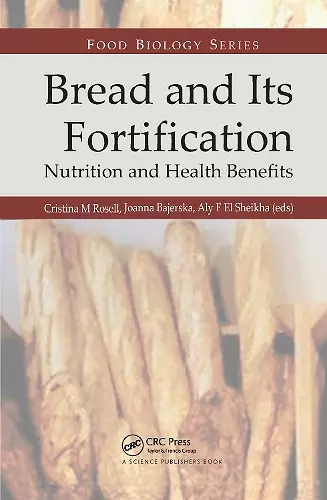Bread and Its Fortification
Nutrition and Health Benefits
Cristina M Rosell editor Joanna Bajerska editor Aly F El Sheikha editor
Format:Hardback
Publisher:Taylor & Francis Inc
Published:22nd Sep '15
Currently unavailable, our supplier has not provided us a restock date
This hardback is available in another edition too:
- Paperback£47.99was £47.99(9781032179636)

Today, bread supplies over half of the caloric intake of the world’s population including a high proportion of the intake of Vitamins B and E. Bread therefore is a major food of the world. Bread was the main stables of the ancient Egyptian diet. Around 7,000 BC humans (probably Egyptians) somehow learned to grind grains in water and heat the mix on hot stoves to make unleavened bread. The art of bread making goes back to very early stages of different historical eras. Bread is an important part of the human diet, but for many people, it is much more than just providing macro- and micro-nutrients. Bread with their different types is influenced mainly by the nature of substrate and microorganisms involved in the fermentation. The components of bread depend on the type of bread and on practice and regulations operating in a country. They include basic components and other components (fortifying or enriching ingredients, emulsifiers, anti-fungal agents, anti-oxidants, enzymes and favoring agents, etc.).
Bread and its Fortification for Nutrition and Health Benefits provides updated information in the area of bread and its fortification for health benefits. It serves as a useful reference book with recent advances in the areas of fermentation technology, bread microbiology, bread biotechnology, and bread biochemistry, which is related strongly to human health.
ISBN: 9781498701563
Dimensions: unknown
Weight: 930g
417 pages